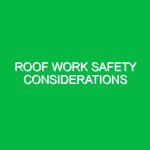Introduction to Falls in HSE
Falls, a significant concern within the Health, Safety, and Environment (HSE) domain, refer to unintended descents to a lower level, which can occur in various environments—be it construction sites, workplaces, or even homes. They are not merely accidents; they are preventable incidents that can lead to severe injuries or even fatalities. In fact, falls represent one of the leading causes of workplace injuries across multiple industries, highlighting the urgent need for effective safety measures and training.
The relevance of falls in HSE cannot be overstated. Given that millions of workers are exposed to fall hazards daily, understanding the risks and implementing preventive strategies is crucial. In this article, we will explore the hazards related to falls, discuss precautionary measures, and review relevant regulations that govern fall safety.
Identifying Hazards and Risks Associated with Falls
To effectively prevent falls, one must first acknowledge the various hazards that contribute to these incidents. Falls can occur for a myriad of reasons, and understanding these risks is the first step in mitigating them.
Common Hazards Leading to Falls
1. Slippery Surfaces: Wet or oily floors are a frequent cause of falls. Whether in a kitchen, industrial setting, or outdoor environment, any surface that is slick can lead to accidents. For instance, a restaurant worker might slip on a wet floor while carrying a tray, resulting in a fall that could cause severe injury.
2. Improper Use of Ladders: Ladders are essential tools in many industries, but they are often misused. A worker might overreach while on a ladder or set it up on an uneven surface, leading to a collapse. According to the National Institute for Occupational Safety and Health (NIOSH), improper ladder use accounts for a significant number of workplace falls.
3. Unstable Work Surfaces: Platforms, scaffolds, or even roofs that are not adequately secured present considerable fall risks. An anecdote from a construction site illustrates this: a worker fell from a scaffold that had not been properly secured, leading to a lengthy recovery period and significant medical expenses.
4. Inadequate Fall Protection Systems: Many workplaces fail to implement effective fall protection measures. For example, a construction site without guardrails near a ledge is a recipe for disaster. Having robust safety systems is not just a recommendation; it is a requirement under various safety regulations.
5. Environmental Factors: Weather conditions can also contribute to falls. For example, rain or snow can make surfaces treacherous. A personal experience from a maintenance worker illustrates this: while performing routine checks on a rooftop during a winter snowstorm, he slipped due to ice accumulation, highlighting the critical need for seasonal safety assessments.
Safety Precautions and Best Practices Related to Falls
Having identified the hazards, the next logical step is to implement effective safety precautions. Here are some actionable strategies that can significantly reduce the risk of falls:
Implementing Comprehensive Training Programs
Training is the backbone of fall prevention. Workers should undergo regular training sessions that cover the proper use of equipment, identification of hazards, and emergency procedures. The training should be interactive and include real-life scenarios to reinforce learning. For instance, role-playing exercises can help prepare workers for potential fall situations, enhancing their readiness to respond appropriately.
Conducting Regular Safety Audits
Regular audits of work environments can uncover hazards before they lead to falls. These audits should evaluate workplace conditions, equipment usage, and adherence to safety protocols. A construction site manager once conducted a surprise inspection and identified several unsafe practices, allowing the team to rectify issues before any accidents occurred. This proactive approach not only enhances safety but also fosters a culture of vigilance among employees.
Utilizing Personal Protective Equipment (PPE)
PPE is essential in fall prevention. Workers should be equipped with safety harnesses, non-slip footwear, and helmets. For example, workers on elevated platforms should always wear harnesses attached to secure anchorage points. A construction company that made it mandatory for all workers to wear harnesses saw a dramatic decrease in fall incidents—a clear testament to the effectiveness of PPE.
Establishing Clear Safety Protocols
Employers must develop and communicate clear safety protocols regarding ladder use, scaffold setup, and working at heights. These protocols should be easily accessible and regularly reviewed. Incorporating visual aids, such as posters and infographics, can help reinforce these messages across the workplace. For instance, a manufacturing plant that implemented visual reminders about ladder safety reduced ladder-related injuries by nearly 50% over a year.
Maintaining Clean and Organized Workspaces
A cluttered workspace can create fall hazards. Regular cleaning schedules should be established to ensure that surfaces are free of debris and spills. Workers should also be encouraged to maintain their work areas, promoting a sense of ownership over safety. In one office setting, a simple initiative to keep walkways clear resulted in fewer incidents of slips and trips, demonstrating the power of collective responsibility.
Regulations and Standards Governing Falls
Understanding the regulations that govern fall safety is essential for compliance and safe work practices. Various organizations provide guidelines and standards that aim to minimize fall risks:
Occupational Safety and Health Administration (OSHA)
OSHA is a key player in establishing standards for workplace safety in the United States. Their regulations on fall protection require employers to provide a safe working environment, particularly for those working at heights. For example, OSHA mandates guardrails, safety nets, and personal fall arrest systems in construction settings. Non-compliance can result in substantial fines and, more importantly, increased risk to worker safety.
National Institute for Occupational Safety and Health (NIOSH)
NIOSH conducts research and makes recommendations for the prevention of work-related injuries. Their guidelines provide comprehensive insights into fall hazards and effective protective measures. By following NIOSH’s recommendations, employers can create safer work environments that adhere to scientifically backed safety practices.
American National Standards Institute (ANSI)
ANSI sets consensus standards that influence safety practices in various industries. Their standards encompass everything from ladder safety to scaffold design, ensuring that equipment used in workplaces meets specific safety criteria. Companies that align their practices with ANSI standards are better positioned to minimize fall risks and protect their employees.
Conclusion
Falls are a persistent hazard within the HSE domain, affecting countless workers every day. By understanding the associated risks, implementing effective safety measures, and adhering to established regulations, workplaces can significantly reduce the incidence of falls. It is not only a matter of compliance; it is a moral obligation to ensure the safety and well-being of every worker. Through proactive training, regular audits, and a commitment to safety, we can create work environments that prioritize health and safety. Remember, a culture of safety is built on awareness, responsibility, and vigilance.


